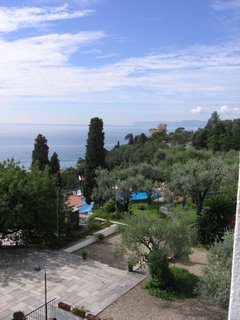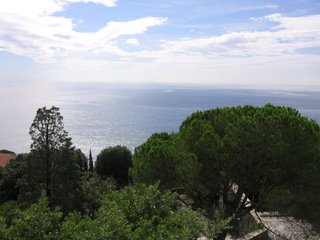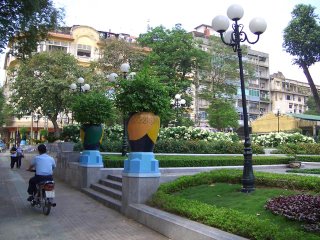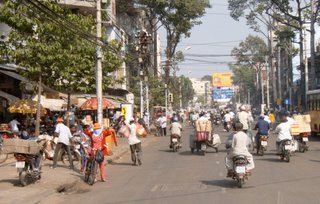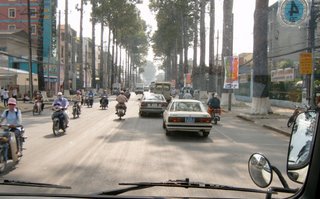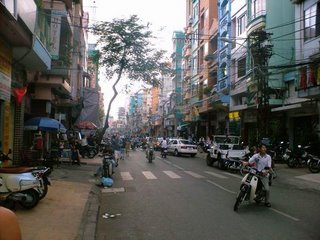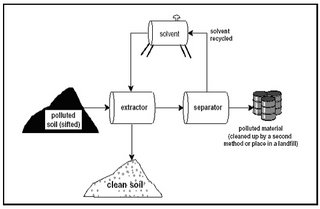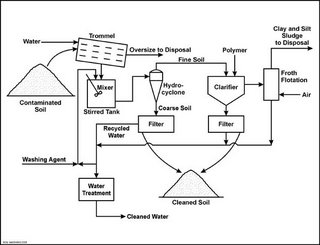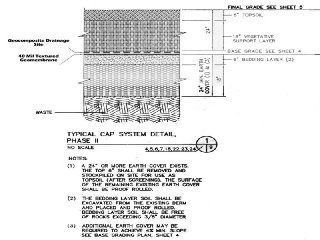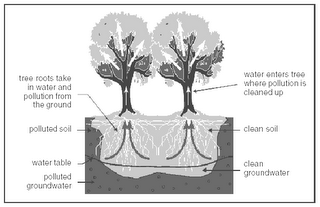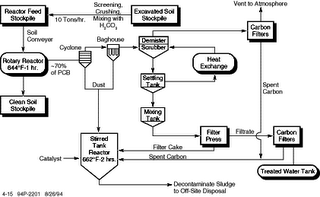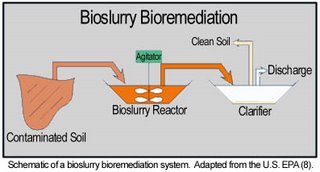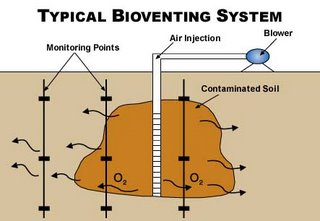
Tanto si continua a discutere di “biodegradabile”. Biodegradabile è una parola che rimane nella “Top 20” di quelle che sento ogni giorno. Quasi tutto, oggi, sembra essere biodegradabile, biologico, ecocompatibile. E – giustamente – si preoccupano pure di farmelo sapere.
Non fraintendetemi, sono sempre attento e contento quando vedo sforzi e realizzazioni in questo senso da parte dell’industria, spinta da consumatori esigenti.
Spesso però, ho l’impressione che si cerchino di by-passare i problemi reali, tamponando con prodotti/soluzioni scenografiche, gli effetti devastanti di stili di vita e di comportamenti alquanto discutibili e, purtroppo, molto diffusi.
Ad esempio: ben venga la bottiglia di plastica totalmente biodegradabile, ma perchè non migliorare la qualità dell’acqua potabile, rendere più efficiente la rete idrica, o – al limite - incentivare le famiglie ad installare depuratori domestici?
Comunque: un composto si dice biodegradabile quando può essere scomposto in elementi semplici e rientrare nel ciclo naturale.I rifiuti biodegradabili possono essere infatti attaccati dai batteri/microrganismi decompositori che li trasformano in sostanze più semplici le quali, dopo un certo periodo di tempo, vengono completamente assorbite dal terreno (i rifiuti organici - ad esempio - sono di origine naturale, quindi biodegradabili).
Vi inoltro stralci - a casaccio - provenienti delle rassegne stampa che la Fede puntualmente mi inoltra (grazie!)
Arrivarono i telefoni biodegradabili (parzialmente):
I telefoni cellulari di nuova generazione, oltre a tutti i vari optional, saranno dotati anche di seconda vita. Più precisamente una volta buttati, germoglieranno, diventeranno dei fiori a vostra scelta. E' la novità annunciata da un gruppo di ricercatori inglesi dell'Università di Warwick, che hanno creato il primo cellulare biodegradabile: una volta gettato, un seme incastonato nella cover (ben visibile dietro una finestrella trasparente) sboccerà ai primi tepori della primavera.L'iniziativa ha preso spunto dalla constatazione che i cellulari sono diventati uno degli articoli tecnologici più rapidamente usati e sostituiti. Il che ha posto il problema del riciclaggio degli apparecchi scartati, per evitare che questi si disperdano nell'ambiente e vadano a incidere sull'ecosistema. Così il gruppo di ricercatori, guidati dal dottor Kerry Kirwan, in collaborazione con la società Pvaxx Richerche & Sviluppo, che si occupa di materiali tecnologici, e Motorola, hanno creato una cover che dispersa nell'ambiente, si decompone, liberando il semino nascosto, che potrà mettere radici.«Si tratta di una piccola innovazione nell'industria della telefonia cellulare, ma importante: il consumatore sarà felice di acquistare un prodotto che non inciderà in modo negativo sull'ambiente» ha dichiarato Kerry Kirwan. La ricerca sui materiali adatti da utilizzare è stata complessa, ma alla fine il team ha creato una forma di polimero altamente biodegradabile, ma al contempo di elevata qualità e resistente all'utilizzo. Contemporaneamente gli assistenti tecnici della Warwicks, hanno compiuto una ricerca su quali tipi di semi si presentano più adatti, a livello biologico, per rimanere anche a lungo in un luogo chiuso prima di germogliare. «Nel prototipo della nostra cover abbiamo posto dei semi di girasole nano» ha aggiunto Kirwan «ma presto gli utenti potranno scegliere in quale fiore si trasformerà il proprio cellulare, dalle gardenie alle rose». Secondo le previsioni dei ricercatori e della Motorola i primi telefoni biodegradabili potranno essere lanciati sul mercato già l'anno prossimo, ma ancora non si può prevedere quale sarà il costo. Insomma useremo un telefono che dal momento dell'acquisto, porta in sè il seme della propria seconda vita. Non si getterà più il cellulare rotto, lo si pianterà sul balcone.
Fonte: Corriere.it , 1 dicembre 2004
I batteri divoratori di stirene:
Il suo nome Pseudomonas putida non promette un granché bene, ma l’attuale tecnologia permette di ottenere risultati sorprendenti da questo batterio. Lo hanno dimostrato i ricercatori dello University College di Dublino che hanno scoperto come questi microrganismi possano vivere nutrendosi di solo stirene – un idrocarburo aromatico da cui si ricavano numerosi prodotti tra cui il polistirene e l’ABS – e di convertire un problema ambientale in un’opportunità industriale.Nel corso della ricerca Keniv O’Connor e i suoi colleghi hanno trasformato il polistirene (o polistirolo) in stirene mediante pirolisi, un processo in cui questa plastica a base di petrolio viene riscaldata fino a 520 gradi Celsius in assenza di ossigeno. Il risultato è un cocktail chimico costituito per più dell’80 per cento da stirene più altre sostanze tossiche; il prodotto è stato somministrato a una coltura di Pseudomonas putida CA-3, un ceppo speciale di questo comune batterio, pur sapendo che l’olio avrebbe dovuto essere ulteriormente raffinato per permettere ai batteri di crescere. Invece, inaspettatamente, i batteri sembravano prosperare con questa dieta, trasformando 64 grammi di stirene non purificato in circa 3 grammi di nuovi batteri. Nel processo, i batteri hanno immagazzinato al loro interno 1,6 grammi di poliidrossialcanoato o PHA, una plastica che nell’ambiente naturale si degrada in modo molto più facile rispetto ad altri prodotti ricavati dal petrolio. Il processo fornisce come risultato alcuni prodotti di scarto come il toluene e richiede una notevole quantità di energia per portare avanti la pirolisi, ma si spera possa portare al riciclaggio di materiali difficili da smaltire come il polistirolo.
Fonte: Le Scienze (28/02/2006)
Che dire dei funghi anti P.O.P.(persistent organic pollutants) ?
Le resine fenoliche sono comunemente usate sia come adesivi industriali sia per la fabbricazione di oggetti, e in special modo parti della carrozzeria delle automobili. Queste resine sono ottenute da fenolo e formaldeide trattati in condizioni di temperature e pressione elevate in presenza di catalizzatori, e le loro catene molecolari vanno a formare strutture notevolmente intrecciate e difficili da rompere. A differenza di altre plastiche non possono essere rifuse e il loro smaltimento rappresenta un problema. Alcuni ricercatori del Dipartimento di biologia dell’Università del Wisconsin - La Crosse hanno scoperto che il fungo Phanerochaete chrysosporium è in grado di digerire queste resine, finora considerate refrattarie a qualsiasi forma di biodegradazione. Il fungo – chè è già noto per essere in grado di decomporre inquinanti come il DDT, il PCB, il TNT e le diossine, per compiere il suo compito di spazzino della plastica sfrutta un enzima, la ligninasi, che normalmente utilizza per degradare la lignina. Esso si è però dimostrato attivo anche contro le resine fenoliche, in quanto la loro struttura molecolare ha punti di contatto con quella della lignina. I ricercatori – che hanno pubblicato la loro scoperta sulla rivista on line della American Chemical Society – avvertono però che per l’impiego del fungo a questo tipo di rifiuti è necessario superare ancora vari problemi, fra i quali l’isolamento di queste plastiche dagli altri materiali. Il fungo riciclatore, per esempio, soccombe in presenza di elevati quantitativi di metalli pesanti.
Fonte: Le Scienze (31/05/2006)
Qualcuno cerca addirittura di rendere più appetitoso il pranzo ai batteri:
Un team di chimici indiani del National Chemical Laboratory di Pune, hanno reso biodegradabile la plastica semplicemente aggiungendo degli zuccheri. Uno stratagemma che rende la plastica commestibile per i batteri e quindi biodegradabile in pochi giorni rispetto ai decenni della normale plastica industriale, come il polistirene (confezioni prodotti per l'elettronica), il polietilene (sacchetti e bottiglie) e il polipropilene (imballaggi alimentari) che costituiscono circa un quinto del volume totale dei rifiuti abbandonati nelle grandi città. La mescolazione allo stirene di una particolare sostanza, che riesce a unire chimicamente saccarosio e glucosio, ha permesso di aggiungere zuccheri alle catene di stirene. La massa di zucchero presente nel polimero è inferiore del 3 per cento. Nel momento in cui i batteri si nutrono dello zucchero causano la frantumazione della catena. I ricercatori dovranno ora eseguire alcuni accertamenti come, ad esempio, accertare la biodegradabilità della sostanza in sostanze atossiche. Inoltre, il processo produce biossido di carbonio, acqua e, lungo il percorso, acidi organici, aldeidi.
Fonte: National Chemical Laboratory di Pune
Altri pensano ai piedi (eco-sustainable fashion?):
Si tratta di una scarpa totalmente biodegradabile realizzata utilizzando materiali privi di sostanze nocive o allergizzanti come cromo, mercurio e pentaclorofenolo (PCF). Il cuoio usato è conciato vegetalmente, i plantari sono in cuoio o sughero, il filo per cucire è misto cotone e la tomaia in pelle è colorata senza sostanze tossiche. E' stata presentata al Sana nei giorni passati e nasce da un'idea dell'associazione “Un punto macrobiotico” di Fermo che ne ha commissionato la produzione all'azienda calzaturiera "IN di Ripani Mirella e C. S.n.c." di Monte Urano, in provincia di Ascoli Piceno. La scarpa sarà venduta al pubblico a un prezzo di 80/90 euro che potrà scendere sensibilmente se acquistata direttamente in fabbrica o attraverso "Filieracorta Picena", lo sportello attivato dalla Provincia di Ascoli per mettere in contatto diretto consumatori e produttori agricoli bio del Piceno.
Fonte: ??
Io sono contento, molto contento. Andiamo avanti per questa strada, ci mancherebbe altro. Però l'altro giorno, al bar, chiaccherando di questi argomenti, mi ha fatto riflettere la perla di saggezza del “mio” barista:
“INGEGNERE, SA UNA COSA? ANCHE LA MIA MERDA E' BIODEGRADABILE MA NON LA BUTTO CERTO IN GIRO PER LA STRADA”
Quanta ragione hai, Ennio!
Statemi bene.
zespri



